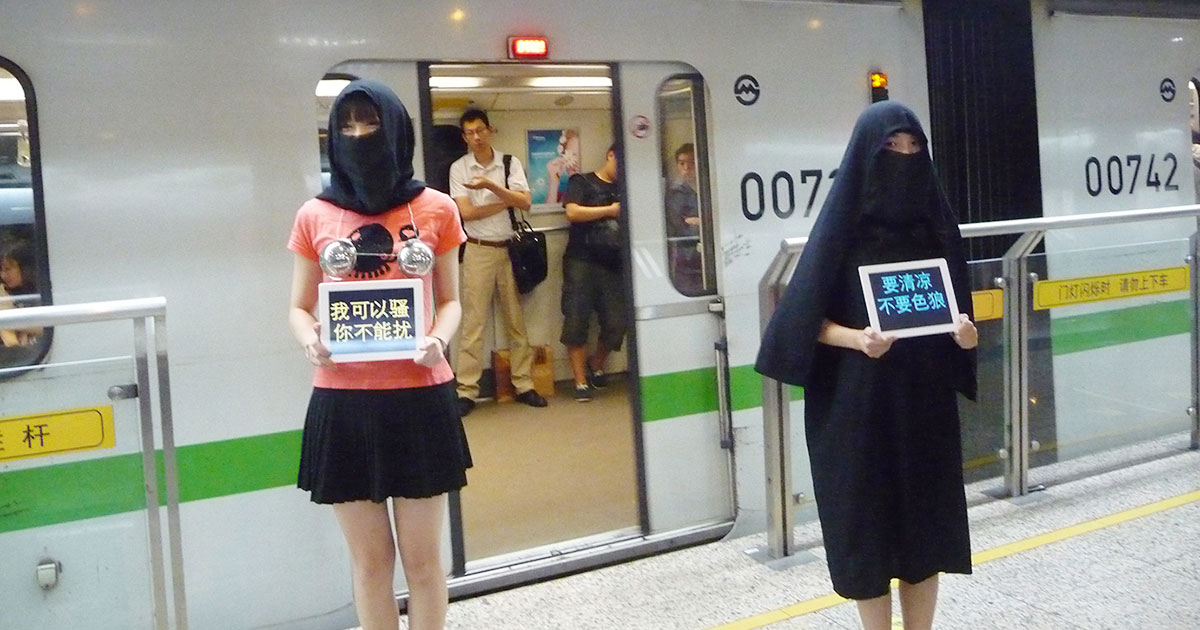New book traces trajectory of feminism in modern China

LAWRENCE – Even before creating a constitution, the first thing the victorious revolutionaries of the People’s Republic of China did was pass the New Marriage Law in 1950, giving women equal rights and creating a fundamentally feminist legal framework compared to the patriarchal system of Confucianism they had wiped away.
It was part of a 20th century wave of “socialist feminism,” which itself was one of many successive approaches to female empowerment that make up the title subject of a new book co-created by a University of Kansas scholar.
 “Feminisms with Chinese Characteristics” (Syracuse University Press) was co-edited and co-written by Hui “Faye” Xiao, professor of Chinese literature at the University of Kansas, and Ping Zhu, associate professor of Chinese literature at the University of Oklahoma.
“Feminisms with Chinese Characteristics” (Syracuse University Press) was co-edited and co-written by Hui “Faye” Xiao, professor of Chinese literature at the University of Kansas, and Ping Zhu, associate professor of Chinese literature at the University of Oklahoma.
They and their 10 co-authors in the United States, Europe, mainland China and Hong Kong trace the trajectory of feminism from its first stirrings in modern China through the upheavals of Maoism and then over the last 40-plus years of post-socialism, or, as it came to be known under Mao’s successor, Deng Xiaoping, “socialism with Chinese characteristics.” It is this formulation that gives the book its viewpoint.
In fact, there have been so many twists and turns in the idea of Chinese feminism that Xiao said the subject of her book chapter, the exploited migrant domestic worker who is also the celebrated author of the memoir “I am Fan Yusu,” likely does not wish to be known as a feminist.
“Probably she wouldn't label herself a feminist,” Xiao said, “so it's more about what she writes and what kind of subversive potential that her writing and the other workers’ writings have. In today's China, you have a revival of a conservative gender ideology that is endorsed and sponsored by the state. So that is why sometimes feminism can be a very sensitive word.”
Because the so-called “NGO feminists” aligned with nongovernmental organizations in recent years (1995-present) have international ties, theories and funding, Xiao said, “they have become a target of state surveillance.”
How did Chinese society go from venerating revolutionary women leaders like Yusu’s mother, a Communist village leader in rural China during the revolutionary and post-revolutionary periods, to today, where the figure of the female cadre is a caricature of backwardness? As Xiao and her fellow authors explain (in broad strokes, at least), China went from nationalist feminism in the pre-Mao era to a top-down socialist, or state, feminism in the early years of the PRC, passing through the era of NGO feminism and finally landing on the “market feminism” of today.
“According to market feminism, those female cadres were overliberated, living masculine lives,” Xiao said. “If they are not having a family, they're not real women. ... So it's very much about how to rediscover the feminine nature in women.”
As for the term “market feminism,” Xiao said, “according to this theory, the feminine nature is very much expressed through finding a unique and feminine lifestyle, and it is also the capacity or the ability to select appropriate commodities to attain these feminine qualities. So the focus is very much on self-expression and self-fulfillment and individual achievement.”
With this latest iteration of feminism and its “emphasis on rediscovering or restoring women's true feminine nature,” Xiao said, “you can see the binary structure is coming back — men versus women and masculine versus feminine.”
Xiao said that the researchers, writers and activists who wrote chapters sought throughout the book to question all manner of simplistic, binary divisions that are embedded in all hierarchical and oppressive systems.
Xiao finds hope in the solidarity generated by the intersectional struggles of female worker/writers like Fan Yusu and her colleagues in the outer-suburban Beijing Picun Literature Group, some of whom she got to know during a 2019 visit, courtesy of research grants from KU’s Center for East Asian Studies and the American Philosophical Society.
“When they write down their stories — when they find their voices to criticize the structural inequalities at every stage of their lives — I find that very empowering and very inspiring,” Xiao said. “I would call it grassroots feminism because it's not about elites or famous people or celebrities. It's very much about ordinary people and even socially marginalized groups. Their acts, their practices, their own words and narratives weave together into a network of feminist practices and also ideas to show us more possibilities.
“I'm trying to say that from what they have done ... we could see a new potential, a new ray of hope,” the KU researcher said. “You're now in this age of division and also oppression. So that results in this new hope, new potential for grassroots feminism from ordinary people.”
Image: Anti-sexual-harassment action at a Chinese subway station. Credit: Chen Xiangqi